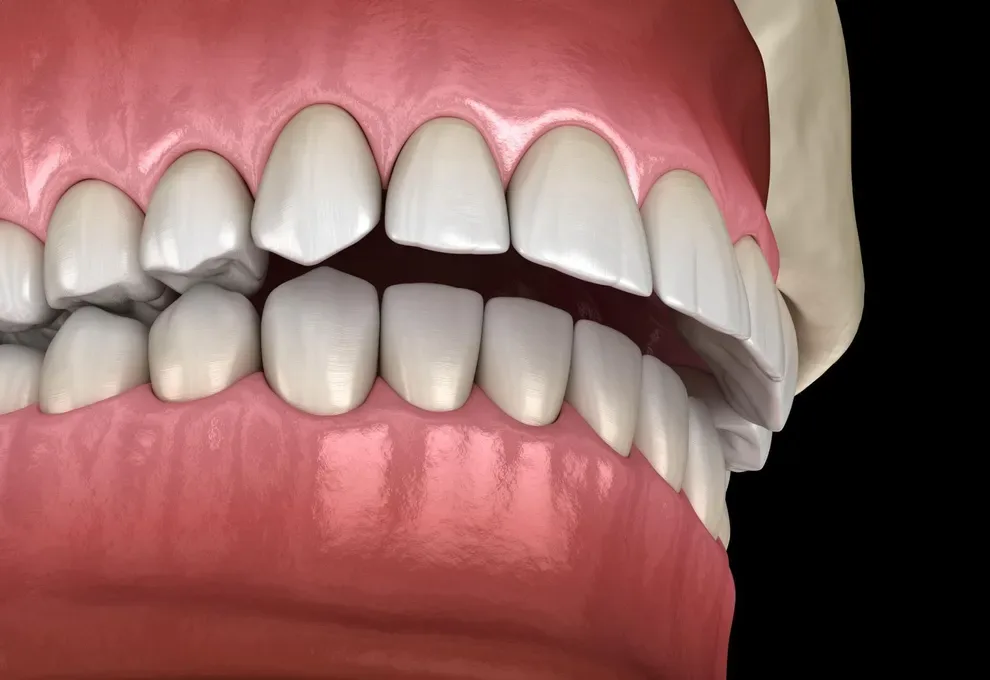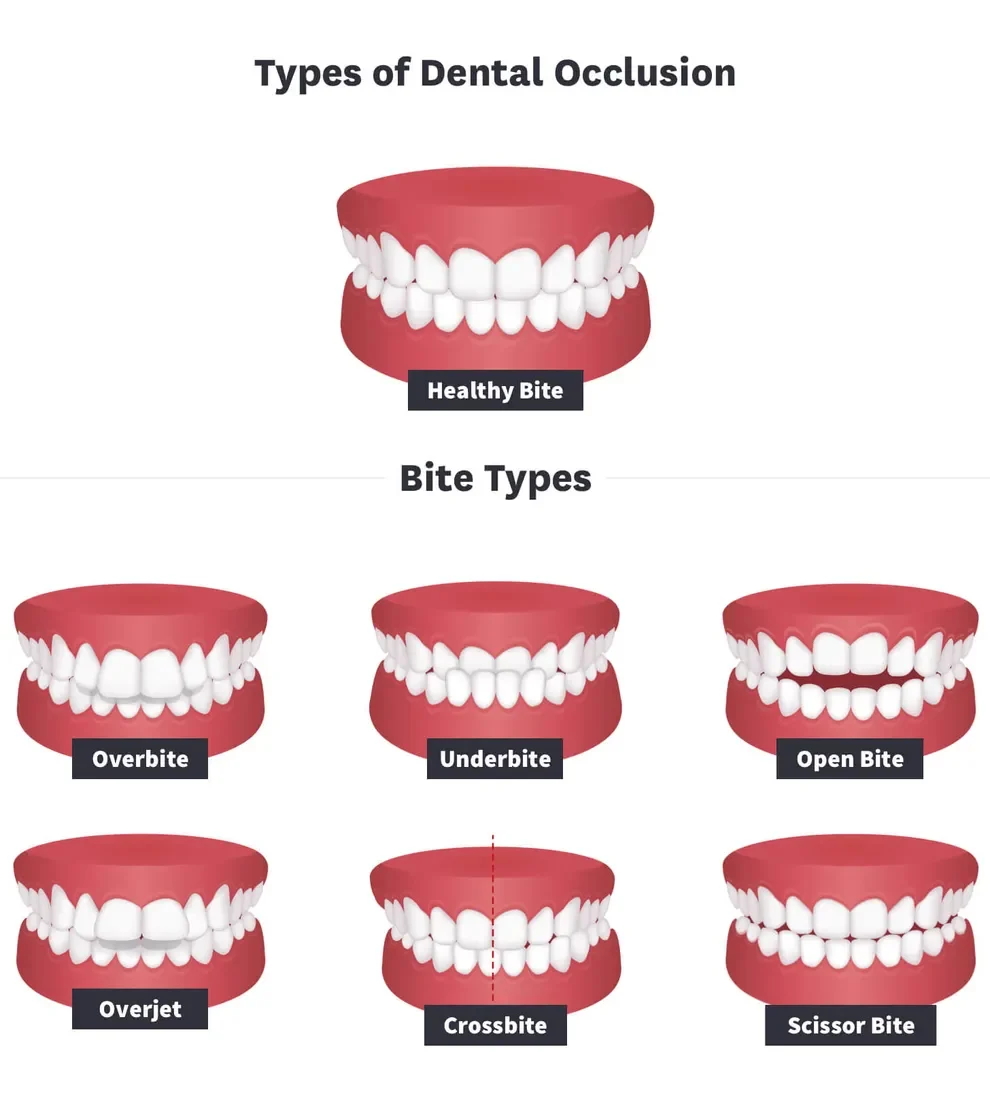What Is Dental Occlusion and How to Safely Treat It

Table of Contents
- What Is Dental Occlusion
- Causes of Malocclusion
- Signs and Symptoms of Malocclusion
- Treatment Options
- What Happens If It's Left Untreated
- References
Occlusion refers to the way in which a person's teeth come together when they bite down. Malocclusions occur when someone's occlusion deviates from the accepted standard.
Malocclusions can have significant ramifications on a person’s self-esteem and oral health. Treating occlusion problems safely typically involves the use of orthodontic devices and takes place over several years.

What Is Dental Occlusion?
Dental occlusion is the scientific term for the way in which a person’s teeth fit together. In other words, their bite. When your teeth occlude properly, they’re protected from excessive force and wear and tear.
If they do not occlude properly, you have a condition called malocclusion. There are many types of malocclusion. Among them:
Overbite (when the top row of teeth sits too far forward over the bottom row).
Underbite (when the bottom row of teeth stretches too far out from under the top row).
Open bite (when the top and bottom rows of teeth do no overlap at all, leaving a visible gap between them).
Overjet (when the middle portion of the top row of teeth extends too far over the bottom row).
Crossbite (when the bottom row of teeth is wider than the top row).
Scissor bite (when the top and bottom rows of teeth are the same width, causing forceful contact between the cusps of all teeth).
Causes of Malocclusion
Malocclusion is usually identified during childhood dental visits, but it can develop at any time over the course of a person’s life. It can be caused by any combination of the following factors:
Genetics (a family history of malocclusion)
Missing teeth (whether congenitally missing or lost due to trauma or decay)
Ill-fitting dental crowns, fillings, retainers, or other oral devices
Harmful behaviors such as thumb-sucking, tongue thrusting, or using bottles or pacifiers for too long as a young child
Significant injuries to the teeth or jaw
Signs and Symptoms of Malocclusion
Sometimes malocclusion is easy to spot with a simple visual inspection. Other times, the issue is more subtle. Some of the things that might indicate that you have a problem with your dental occlusion include:
Excessive tooth wear, especially if it is only evident on certain teeth
Frequent headaches
Difficulty chewing or speaking
Frequent biting of your cheeks and tongue
Facial changes around the jawline
Only your dentist or orthodontist can diagnose a malocclusion. Be sure to seek the guidance of a dental professional for confirmation.
Three types of dental occlusions include static occlusion, dynamic occlusion, and centric occlusion.
Treatment Options
Orthodontics are the preferred treatment method for malocclusion. There are two main types of orthodontics that can be used to fix the alignment of your teeth: fixed metal braces and clear aligner trays.
Fixed metal braces are the traditional solution to problems with malocclusion. These tiny devices made of metal wires and brackets are used to gradually push the teeth into a more favorable position. This treatment is carried out over the course of one to three years and requires many visits to an orthodontist for adjustments and maintenance.
Thanks to recent advances in modelling technology, malocclusions can also be treated using clear aligner trays. Each patient receives a series of custom aligned trays at the beginning of their treatment and is then instructed to wear each of them for a predetermined amount of time. This applies pressure to the teeth and reshapes their alignment similarly to how metal braces do. This method often takes less than one year and is best suited for patients who need minor corrections in their occlusion.
Certain severe forms of malocclusion may require additional treatment, such as a jaw expander, tongue crib, or even surgery. Your orthodontist will tell you if they believe that your case is likely to require any of these extra measures.
On the other hand, if your case is mild, your dentist may be able to alleviate your symptoms using everyday dental procedures. They may propose shaving down a bit of your enamel or dental filling to improve your occlusion or installing crowns to give some of your teeth more vertical dimension.
What Happens If It’s Left Untreated?
Many malocclusions are primarily cosmetic issues and do not necessarily need to be corrected. However, some people feel self-conscious about these defects. In these cases, treating the abnormalities can help you improve your self-esteem.
On the other hand, more significant malocclusions can have an impact on your quality of life. If this type of bite problem is not treated, any symptoms you are experiencing that are related to it will persist. If you have having headaches and jaw pain, these may get worse over time. You may also experience:
An increased rate of tooth wear
Gum recession around teeth subjected to increased pressure
A higher risk of dental injuries (especially blows to the front teeth in cases of overjet)
A higher risk of dental fractures
For the sake of your long-term oral health, it is best to get any symptomatic malocclusions treated as soon as possible. The sooner they are corrected, the less likely they are to have an adverse impact on your teeth and gums.
